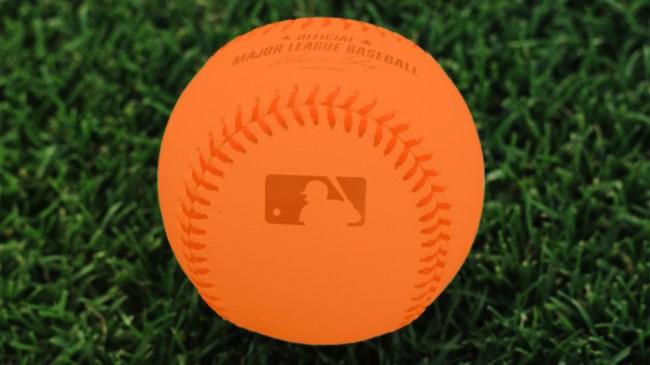
Getty Image
There aren’t many sports out there that pride themselves on tradition quite like baseball, which has historically been pretty resistant to change. With that said, the MLB has been open to experimenting every now and then, which led to orange baseballs being deployed during a brief trial run at spring training in the 1970s.
Baseball has a history that stretches back to the 1830s, and while it certainly evolved a fair amount over the decades that followed, it was long known as a shining example of a sport that subscribed to the “If It Ain’t Broke, Don’t Fix It” mentality.
While baseball may still be known as “America’s Pastime,” the fact that it’s firmly lost that crown to the NFL undoubtedly played a role in the fairly sweeping changes the MLB has adopted in recent years; it’s hard to imagine a pitch clock would have been instituted and robot umpires would be on the verge of replacing their human counterparts if the game still reigned supreme over the competition in the United States.
Of course, those changes were still met with plenty of pushback from the most recent generation of traditionalists who’ve reflexively recoiled whenever the sanctity of baseball is threatened by a proposed tweak, whether we’re talking about the introduction of the DH, mandatory batting helmets, or the dissolution of the color barrier.
I think most people would agree those aforementioned changes were a good thing, but that doesn’t mean the MLB has also tinkered with some ideas that just didn’t pan out.
The ill-fated trial run that brought orange baseballs to the MLB

Getty Image
Charles Finley was an Alabama native who relocated to Indiana before making a fortune selling medical insurance in the 1940s, and when the 1950s rolled around, he decided he wanted nothing more than to be the owner of an MLB team.
Finley initially attempted to buy the Philadelphia Athletics in 1954 but was ultimately thwarted. He was similarly unsuccessful in his bids to obtain the Tigers, White Sox, and the rights to the franchise that would become the Angels, but in 1960, things came full circle when he became the majority owner of the A’s (who had since moved to Kansas City).
The fairly eccentric businessman quickly earned a reputation for dreaming up wild schemes to generate publicity, like adopting a live donkey as a mascot, introducing the purposefully gaudy yellow-and-green uniforms the Athletics still sport, and paying The Beatles the modern equivalent of $1.5 million to perform a single show at the team’s stadium in 1964.
Finley also had plenty of ideas when it came to changes he thought the MLB should adopt. He was a vocal proponent for the DH, night games during the World Series, and interleague games, and while those ideas were eventually embraced, the same can’t be said about his proposal to respectively reduce the number of balls and strikes per at-bat to three and two (which he argued would speed up the game).
In 1973, Finley floated another unconventional concept: orange baseballs, arguing it would be easier for fans and players alike to keep track of things compared to a white sphere that had a tendency to blend in with its surroundings.
The MLB decided to give Finley the green light to try out his orange experiment, and on March 29, 1973, they were used for the very first time during a spring training game between the Athletics and the team that’s now known as the Guardians.
However, batters complained they had trouble figuring out what kind of pitch had been thrown because the orange dye made it difficult to track the rotation of the baseballs’ seams, while pitchers weren’t thrilled with the comparatively slippery nature of the treated rawhide.
The orange balls returned for a second time when the Athletics faced off against the Angels a few days later, but they were permanently retired in the wake of the contest.